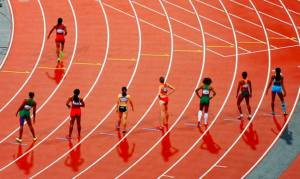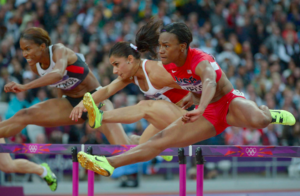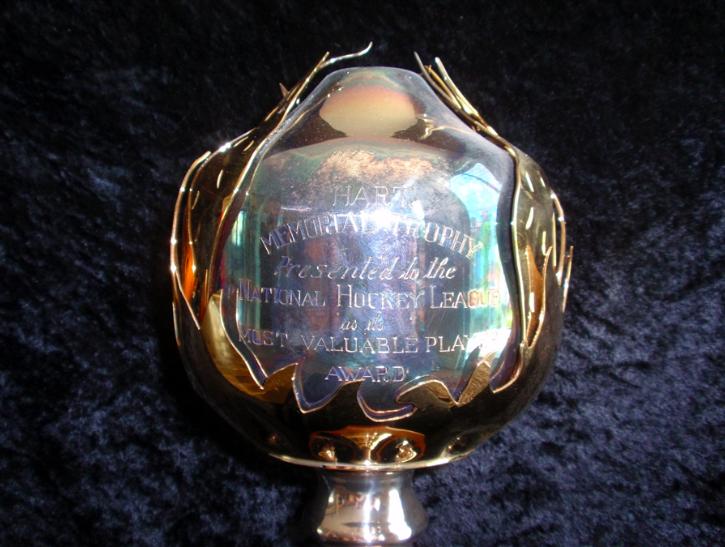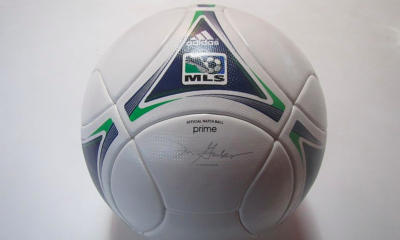Sports
What Are The Basic Rules Of Athletics (Track and Field)?

What Are The Basic Rules Of Athletics (Track and Field)?
Unlocking the Gateway to Athletic Excellence: Exploring the Fundamental Rules of Track and Field
Welcome to the electrifying world of track and field, where speed, strength, and skill converge to showcase the epitome of human athleticism. In this comprehensive guide, we embark on a journey to uncover the fundamental rules that govern the exhilarating realm of athletics. From the thunderous roar of sprinters on the track to the graceful precision of athletes in field events, we delve into the essence of fair play, competition, and sportsmanship that define this esteemed sport.
Join us as we unravel the intricacies of starting procedures, lane integrity, hurdle mastery, and the precise measurements that determine victory. Whether you’re a seasoned athlete, a passionate fan, or an eager newcomer, this guide will serve as your compass through the labyrinth of track and field rules, ensuring clarity, understanding, and appreciation for the sport’s rich tapestry.
So, lace up your spikes, adjust your mindset, and prepare to embark on a journey into the heart of track and field excellence. Together, let’s ignite the flames of passion and inspiration as we uncover the basic rules that form the bedrock of this timeless pursuit of athletic greatness.
Starting Procedures: Navigating the Gateway to Racing Excellence
In the pulsating world of track and field, the starting line marks the threshold between anticipation and action, where athletes stand poised, ready to unleash their explosive potential upon the track.

Understanding the intricacies of starting procedures is paramount for every athlete, as it sets the stage for the exhilarating battles that unfold on the oval. Here, we delve into the basic rules governing starting procedures in track and field:
- Starting Blocks: For sprinting events, athletes are positioned in starting blocks, meticulously adjusting their stance to optimize their explosive power. Each athlete’s feet must be set in the blocks behind the starting line, ensuring a fair and uniform launch.
- Set Position: As athletes settle into the set position, tension mounts, and anticipation fills the air. With hands firmly planted on the track, bodies coiled like springs, athletes await the crack of the starter’s pistol that will propel them into motion.
- Reaction Time: The instant the starter’s pistol echoes through the stadium, reaction time becomes critical. Athletes must explode out of the blocks with lightning speed, utilizing every ounce of their explosive power to gain a fractional advantage over their competitors.
- False Starts: However, the quest for a lightning-fast start must be tempered with caution, as false starts can lead to disqualification. Athletes must exhibit unwavering discipline, refraining from twitching or flinching before the starter’s signal, lest they incur the dreaded penalty that dashes their hopes of glory.
- Starting Commands: In addition to the starter’s pistol, starting commands play a pivotal role in initiating the race. Athletes must heed the commands of “On your marks,” “Set,” and finally, the resounding “Go,” which signals the commencement of the race and ignites the explosive burst of speed that propels them down the track.
- Lane Integrity: Maintaining lane integrity is paramount during the initial stages of the race. Athletes must remain within the boundaries of their assigned lane, ensuring fair competition and minimizing the risk of interference with fellow competitors.
In essence, mastering the art of starting procedures in track and field demands a delicate balance of explosive power, unwavering focus, and meticulous adherence to rules and regulations. It is at the starting line that champions are forged, and every athlete must approach it with the utmost respect, determination, and readiness to unleash their full potential upon the track.
Stay in Your Lane: Upholding Fairness and Integrity on the Track
In the pulsating arena of track and field, where speed and precision reign supreme, the sanctity of each lane is sacrosanct. The cardinal rule of “stay in your lane” is a fundamental tenet that underpins the integrity and fairness of every race. Let’s delve deeper into the basic rules governing lane integrity in track and field:

- Assigned Lanes: Before the crack of the starter’s pistol, each athlete is assigned a specific lane in which they must remain throughout the duration of the race. These lanes are demarcated by bold white lines, serving as boundaries that delineate each athlete’s territory on the track.
- Sprinting Events: In sprinting events, such as the 100 meters, 200 meters, and 400 meters, lane integrity is paramount. Athletes must adhere to the curvature of their assigned lane, navigating the bend with precision and poise as they accelerate towards the finish line.
- Hurdle Races: Even in hurdle races, where athletes must negotiate a series of barriers, lane integrity remains a critical component of fair competition. Athletes must clear each hurdle within the confines of their assigned lane, ensuring that they do not impede or obstruct the progress of competitors in adjacent lanes.
- Disqualification Risk: Deviating from the confines of one’s lane carries grave consequences. Athletes who step on or over the lane boundary risk disqualification, as their actions may provide an unfair advantage or impede the progress of other athletes.
- Judicial Oversight: Track and field officials closely monitor lane integrity during races, vigilantly observing each athlete’s adherence to their assigned lane. Any infringement of lane boundaries is swiftly addressed, with penalties imposed as necessary to maintain the integrity of the competition.
- Fair Competition: Ultimately, the principle of “stay in your lane” upholds the ethos of fair competition, ensuring that each athlete competes on a level playing field. By respecting the boundaries of their assigned lane, athletes honor the spirit of sportsmanship and uphold the integrity of the sport.
In essence, lane integrity is not merely a rule to be followed, but a cornerstone of sportsmanship and fairness in track and field. As athletes thunder down the straightaways and navigate the bends of the oval, staying true to their lane is a testament to their commitment to excellence and their respect for the rules that govern the sport.
Navigating the Hurdles: Unveiling the Basic Rules of Hurdling in Track and Field
In the adrenaline-charged world of track and field, hurdling events stand as testaments to the extraordinary athleticism and precision of competing athletes. As they sprint down the track, each stride meticulously calculated, hurdling athletes face the formidable challenge of navigating over barriers with speed, agility, and finesse. Let’s unravel the basic rules that govern these captivating events:

- Hurdle Placement: Hurdles are strategically placed along the track at precise intervals, creating a series of obstacles that athletes must clear while maintaining their speed and rhythm. The height of the hurdles varies depending on the event, with each hurdle representing a unique challenge to be overcome.
- Hurdle Heights: The standard heights of hurdles differ between men’s and women’s events and vary based on the specific distance of the race. For example, in men’s hurdling events, the 110-meter hurdles typically feature barriers standing at 42 inches (106.7 cm) high, while women’s events, such as the 100-meter hurdles, often include hurdles set at 33 inches (83.8 cm) in height.
- Hurdling Technique: Athletes approach each hurdle with a combination of explosive power and precise technique. As they near the hurdle, athletes adjust their stride pattern, lifting their lead leg high to clear the barrier while simultaneously driving their trail leg forward to maintain momentum. Proper arm movement and body lean are also crucial elements of hurdling technique, helping athletes maintain balance and stability throughout the clearance.
- Knocking Over Hurdles: Knocking over a hurdle during a race can result in penalties or disqualification, depending on the severity of the infraction and the rules of the competition. Athletes must exercise caution and precision to ensure clean clearances, avoiding costly errors that may compromise their performance.
- Lane Integrity: Like other track events, maintaining lane integrity is essential in hurdling. Athletes must remain within their assigned lanes throughout the race, avoiding interference with competitors in adjacent lanes and upholding the fairness and integrity of the competition.
- False Starts: As with sprinting events, false starts in hurdling can lead to disqualification. Athletes must exhibit discipline and focus, refraining from any movement before the starter’s signal to avoid penalties that could derail their race.
- Judicial Oversight: Hurdling events are closely monitored by track officials, who ensure that athletes adhere to the rules and regulations governing the competition. Any infractions or violations are promptly addressed, with penalties imposed as necessary to maintain the integrity of the race.
In essence, hurdling in track and field represents a captivating blend of speed, agility, and precision. As athletes soar over barriers with lightning speed and flawless technique, they embody the essence of athletic excellence and inspire spectators with their awe-inspiring performances.
So let the hurdles rise, the athletes soar, and the spectators cheer, as hurdling events continue to captivate and enthrall audiences around the globe.
Field of Play: Where Athletes Forge Their Legacies
In the sprawling expanse of the track and field arena, the field of play serves as the canvas upon which athletes etch their names into the annals of sporting history. From the thunderous roar of the crowd to the hushed anticipation of competitors, the field of play is a stage where dreams are realized and champions are crowned. Let’s delve into the basic rules governing the field of play in track and field events:

- Track Events: The field of play for track events consists of a precisely measured oval track, typically surfaced with synthetic material or well-maintained grass. Athletes compete in events ranging from sprints to distance races, navigating the curves and straightaways with speed, determination, and strategic prowess.
- Field Events: In contrast, field events unfold within designated areas adjacent to the track, each tailored to accommodate the unique demands of the event. These areas include the long jump pit, high jump and pole vault area, shot put and discus throwing circles, and the javelin runway, among others.
- Long Jump and Triple Jump Pit: Athletes in the long jump and triple jump events launch themselves into the air from a designated take-off board, aiming to achieve maximum distance or height before landing in a sand-filled pit. Proper technique and precise timing are essential for success in these events.
- High Jump and Pole Vault Area: The high jump and pole vault events require athletes to clear a horizontal bar set at progressively higher heights. Athletes use a combination of speed, agility, and explosive power to soar over the bar and clear the height, aiming for a clean clearance without dislodging the bar.
- Throwing Circles: Shot put, discus, and hammer throwing events take place within designated throwing circles, where athletes unleash their strength and technique to propel the implements as far as possible. Proper footwork, balance, and rotational technique are key components of successful throws.
- Javelin Runway: Javelin throwers utilize a dedicated runway to build momentum before releasing the javelin into the air. Athletes must exhibit precise timing and technique to achieve maximum distance, with the javelin landing within the designated sector to be considered a legal throw.
- Safety Considerations: Safety is paramount within the field of play, with officials and event organizers ensuring that all equipment and facilities meet rigorous safety standards. Athletes are also responsible for adhering to safety protocols and exercising caution to prevent injury during competition.
In essence, the field of play in track and field serves as the canvas upon which athletes showcase their skills, talents, and dedication to the sport. From the lightning speed of sprinters on the track to the explosive power of throwers in the field, each event unfolds with its own unique blend of athleticism and excitement.
So let the competitions commence, the records fall, and the champions emerge, as the field of play becomes a stage for sporting greatness to unfold before our eyes.
Measuring Devices: Precision Tools for Tracking Athletic Achievement
In the dynamic world of track and field, where every fraction of a second and centimeter counts, precision is paramount. Measuring devices stand as indispensable tools, ensuring accuracy and fairness in determining the outcomes of athletic endeavors. Let’s explore the essential measuring devices used in track and field events:
- Electronic Timing Systems: Electronic timing systems are the backbone of track and field competitions, providing precise measurements of athletes’ performance down to the millisecond. These systems utilize advanced technology, including sensors, lasers, and high-speed cameras, to record athletes’ start and finish times with unparalleled accuracy. Whether it’s a sprint down the straightaway or a relay exchange at lightning speed, electronic timing systems capture every moment with precision and reliability.
- Distance Measuring Devices: In field events such as the long jump, triple jump, shot put, discus throw, and javelin throw, accurate measurement of distance is essential for determining the results. Tape measures, laser distance meters, and measuring wheels are commonly used to measure the distance traveled by athletes’ throws or jumps. These devices ensure that each performance is assessed fairly and consistently, with results recorded to the nearest centimeter or inch.
- Height Measurement Tools: In high jump and pole vault events, precise measurement of height is critical for determining the clearance achieved by athletes. Height measurement tools, such as height bars and stadia rods, are used to measure the height of the bar or crossbar as it is raised during competition. Officials carefully monitor the height achieved by athletes, ensuring that each clearance is accurately recorded and accounted for in the final results.
- Weighing Scales: In throwing events such as the shot put, discus, and hammer throw, the weight of the implements used by athletes must meet specific regulations. Weighing scales are employed to ensure that each implement adheres to the prescribed weight standards established by the governing body of the sport. Athletes must use implements that meet the required weight criteria to ensure fair competition and compliance with the rules.
- Wind Gauges: Wind gauges are utilized in events such as sprints, hurdles, and jumps to measure the speed and direction of the wind. Wind readings are crucial for assessing the impact of wind assistance or resistance on athletes’ performances, particularly in events where wind conditions can significantly affect results. By providing accurate wind measurements, wind gauges help maintain fairness and consistency in competition.
In essence, measuring devices play a pivotal role in track and field competitions, ensuring that athletes’ performances are evaluated with precision and integrity.
From electronic timing systems that capture split-second finishes to distance measuring devices that record the arc of a javelin throw, these tools uphold the highest standards of accuracy and fairness in the pursuit of athletic excellence.
So let the races be timed, the distances be measured, and the heights be recorded, as measuring devices stand as silent sentinels of sporting achievement in the captivating world of track and field.
Fair Play: Upholding the Spirit of Sportsmanship in Track and Field
In the electrifying arena of track and field, where athletes push the boundaries of human performance, the concept of fair play stands as a cornerstone of the sport’s ethos. Rooted in integrity, respect, and honesty, fair play embodies the spirit of sportsmanship that transcends mere competition. Let’s delve into the fundamental principles of fair play in track and field:
- Respect for Competitors: At the heart of fair play lies a profound respect for one’s competitors. Athletes honor their opponents’ dedication, skill, and perseverance, recognizing that each competitor contributes to the rich tapestry of athletic excellence. Whether crossing the finish line first or trailing behind, athletes display humility and graciousness in victory and defeat alike.
- Adherence to Rules and Regulations: Fair play demands strict adherence to the rules and regulations that govern track and field competitions. Athletes compete within the confines of established guidelines, refraining from any behavior that may confer an unfair advantage or compromise the integrity of the sport. By upholding the rules, athletes ensure a level playing field for all participants and maintain the credibility of the sport.
- Ethical Conduct: Upholding ethical conduct is paramount in track and field, both on and off the field of play. Athletes demonstrate honesty, integrity, and transparency in their actions, refusing to resort to cheating, doping, or other forms of misconduct. By embodying the highest standards of ethical behavior, athletes uphold the principles of fair play and inspire trust and respect from fellow competitors, officials, and fans.
- Respect for Officials: Fair play extends beyond interactions between athletes to encompass relationships with officials and authority figures. Athletes treat officials with respect, acknowledging their role in ensuring the integrity and fairness of competitions. Whether accepting a judgment call or seeking clarification on a ruling, athletes engage with officials in a spirit of mutual respect and cooperation.
- Grace in Victory and Defeat: In the unpredictable realm of track and field, success and setbacks are inevitable. Athletes exhibit grace and dignity in both victory and defeat, celebrating triumphs with humility and resilience and facing challenges with fortitude and sportsmanship. By embracing the highs and lows of competition with equanimity, athletes embody the essence of fair play and inspire admiration from peers and spectators alike.
In essence, fair play serves as the moral compass that guides athletes on their journey through the exhilarating world of track and field. Rooted in integrity, respect, and ethical conduct, fair play transcends the pursuit of victory to embrace the essence of sportsmanship and camaraderie.
So let the races be run, the jumps be soared, and the throws be launched, as athletes uphold the principles of fair play and honor the noble spirit of track and field with every stride, leap, and heave.
Uniforms and Equipment: The Tools of Athletic Excellence
In the dynamic realm of track and field, where every detail can make a difference, athletes rely on specialized uniforms and equipment to optimize their performance and ensure their safety.
From sleek, aerodynamic attire to meticulously crafted implements, these essential tools serve as the foundation upon which athletic excellence is built. Let’s explore the significance of uniforms and equipment in track and field:
- Performance-Optimized Uniforms: Track and field uniforms are meticulously designed to maximize athletes’ performance and comfort during competition. Lightweight, moisture-wicking fabrics help athletes stay cool and dry, while sleek, form-fitting designs reduce wind resistance and enhance aerodynamics. Vibrant colors and bold designs not only add flair to the athlete’s appearance but also serve practical purposes, such as enhancing visibility on the track or field.
- Running Spikes: A cornerstone of every sprinter’s arsenal, running spikes provide traction and stability on the track, enabling athletes to generate explosive speed and power with each stride. These specialized shoes feature lightweight construction, aggressive traction patterns, and removable spikes that can be customized to suit different track conditions and events. Whether sprinting around the bend or charging down the straightaway, running spikes give athletes the competitive edge they need to excel.
- Throwing Implements: Athletes competing in throwing events, such as shot put, discus, javelin, and hammer throw, rely on specialized implements to showcase their strength and technique. Shot putters wield heavy metal balls, discus throwers launch spinning discs, javelin throwers hurl slender spears, and hammer throwers whirl weighted spheres on the end of a wire. Each implement is carefully crafted to meet strict weight and dimension standards, ensuring fair and consistent competition.
- Protective Gear: In certain track and field events, athletes may utilize protective gear to safeguard against injury and enhance performance. Pole vaulters wear helmets to protect against head injuries during high-flying maneuvers, while hurdlers don shin guards to shield their legs from impact with the barriers. Additionally, athletes in field events may use wrist wraps, knee sleeves, or other supportive gear to prevent strain and enhance stability during explosive movements.
- Compliance with Regulations: Athletes must adhere to strict regulations regarding uniforms and equipment to ensure fair and safe competition. Governing bodies of the sport establish rules governing the size, weight, and composition of implements, as well as specifications for uniforms, shoes, and protective gear. Compliance with these regulations is essential to maintaining the integrity of the sport and ensuring a level playing field for all competitors.
In essence, uniforms and equipment in track and field are more than just functional tools—they are symbols of dedication, preparation, and commitment to excellence. Whether sprinting down the track, launching into the air, or unleashing powerful throws, athletes rely on these essential tools to elevate their performance and achieve their goals.
So let the uniforms be donned, the spikes be laced, and the implements be wielded, as athletes harness the power of precision-engineered gear to push the boundaries of athletic achievement in the captivating world of track and field.
Timing and Scoring: The Precision Instruments of Track and Field
In the electrifying world of track and field, where every fraction of a second and centimeter counts, timing and scoring systems stand as the guardians of accuracy and fairness.
From the thunderous roar of the starting gun to the jubilant celebration at the finish line, these precision instruments ensure that athletes’ performances are meticulously recorded and evaluated. Let’s explore the essential role of timing and scoring in track and field:
- Electronic Timing Systems: At the heart of timing in track and field lies the sophisticated technology of electronic timing systems. These state-of-the-art systems utilize a combination of sensors, lasers, and high-speed cameras to precisely measure athletes’ start and finish times with unparalleled accuracy. From sprinting events on the track to hurdles, relays, and even field events such as long jump and triple jump, electronic timing systems capture every moment with precision and reliability.
- Manual Timing Backup: While electronic timing systems are the primary method of timing in modern track and field competitions, manual timing methods serve as a crucial backup in case of technical issues or discrepancies. Trained officials equipped with stopwatches and handheld timing devices stand ready to record athletes’ performances in the event of a system malfunction or other unforeseen circumstances, ensuring that accurate timing data is always available.
- Photo Finish Technology: In close races where athletes cross the finish line in a tight pack, photo finish technology provides an additional layer of precision in determining the order of finish. High-speed cameras positioned at the finish line capture a series of images in rapid succession, allowing officials to analyze the precise moment when each athlete crosses the line. This technology resolves close finishes with remarkable accuracy, ensuring that every race is decided fairly and transparently.
- Scoring Systems: In addition to timing, scoring systems play a crucial role in track and field competitions, tallying athletes’ performances and determining the final standings. Whether based on points awarded for distance, height, or time, scoring systems provide a standardized method of evaluating athletes’ achievements across a wide range of events. From the explosive power of throws to the graceful precision of jumps, every performance is assigned a score that reflects the athlete’s skill and accomplishment.
- Real-Time Results: Thanks to advances in technology, spectators, coaches, and athletes themselves can access real-time results and performance data during competitions. Electronic scoreboards, timing displays, and live-streaming platforms provide up-to-the-minute updates on race outcomes, field event distances, and overall standings, allowing fans to follow the action closely and athletes to track their progress throughout the competition.
In essence, timing and scoring systems in track and field serve as the silent sentinels of sporting integrity, ensuring that every performance is recorded with precision and every victory is earned through fair competition.
From the thunderous roar of the crowd to the triumphant celebrations on the podium, these precision instruments bear witness to the extraordinary feats of athleticism that unfold in the captivating world of track and field.
Protests and Appeals: Ensuring Fairness and Integrity in Track and Field
In the high-stakes arena of track and field, where milliseconds and millimeters can separate victory from defeat, the process of protests and appeals plays a vital role in upholding the principles of fairness and integrity.
Athletes, coaches, and officials alike rely on this system to address potential discrepancies or disputes that may arise during competition, ensuring that every result is determined by the rules and regulations of the sport. Let’s explore the essential aspects of protests and appeals in track and field:
- Grounds for Protest: Athletes or team officials may file a protest if they believe that a rule has been violated or an error has occurred that could affect the outcome of a competition. Common grounds for protest include timing discrepancies, lane infringements, equipment malfunctions, or misapplications of the rules by officials. Protests must be based on valid grounds and supported by evidence or witness testimony.
- Protest Procedures: The process of filing a protest typically begins with the completion of a formal protest form, which outlines the specific grounds for the protest and any relevant evidence or documentation. Protests must be lodged within a specified timeframe, typically shortly after the incident in question occurs or before the conclusion of the event. Once a protest is submitted, it is reviewed by a panel of officials or a protest committee appointed by the governing body of the competition.
- Investigation and Resolution: Upon receipt of a protest, officials conduct a thorough investigation to assess the validity of the claims and gather evidence from all relevant parties. This may involve reviewing video footage, interviewing witnesses, or consulting with technical experts to determine the facts surrounding the incident. Based on the findings of the investigation, the protest committee deliberates and renders a decision on the validity of the protest and any subsequent actions or sanctions.
- Appeal Process: In the event that a protest is denied or deemed unfounded, athletes or teams have the right to appeal the decision through an established appeals process. Appeals are typically heard by a higher authority, such as a technical delegate or appellate body, who reviews the evidence and arguments presented by both parties before rendering a final decision. The appeal process provides an opportunity for athletes to seek redress for perceived injustices and ensure that their rights are upheld.
- Impartiality and Transparency: Central to the effectiveness of the protest and appeals process is the commitment to impartiality and transparency. Officials responsible for reviewing protests and appeals must act objectively and independently, free from bias or undue influence. Decisions must be based solely on the merits of the case and the evidence presented, with a commitment to fairness and consistency in applying the rules of the sport.
In essence, protests and appeals in track and field serve as safeguards against potential injustices or errors that may occur during competition. By providing athletes with a mechanism to address grievances and seek resolution, this system reinforces the principles of fairness, transparency, and accountability that are essential to the integrity of the sport.
So let the protests be heard, the evidence be considered, and the decisions be rendered, as track and field athletes uphold the highest standards of sportsmanship and integrity in pursuit of athletic excellence.
Drug Testing in Track and Field: Safeguarding Clean Competition
In the world of track and field, where athletes strive for peak performance and the pursuit of excellence knows no bounds, drug testing stands as a crucial safeguard against the scourge of doping.
Upholding the integrity of the sport and protecting the health and safety of athletes, drug testing protocols are rigorously enforced to ensure that competition remains fair and transparent. Let’s delve into the essential aspects of drug testing in track and field:
- Purpose of Drug Testing: Drug testing serves multiple purposes within track and field, with the primary goal of deterring and detecting the use of performance-enhancing substances or methods. By conducting random and targeted tests on athletes, officials aim to maintain a level playing field and uphold the principles of fair competition. Additionally, drug testing helps safeguard the health and well-being of athletes by discouraging the use of potentially harmful substances.
- Testing Procedures: Drug testing in track and field is conducted in accordance with strict protocols established by the World Anti-Doping Agency (WADA) and adhered to by the International Association of Athletics Federations (IAAF) and national governing bodies. Athletes may be subject to both in-competition and out-of-competition testing, with samples collected from blood, urine, or other biological matrices. Testing procedures are carried out by trained anti-doping personnel using specialized equipment and techniques to ensure the integrity and accuracy of the process.
- List of Prohibited Substances: The WADA Prohibited List outlines the substances and methods that are banned in sport due to their potential to enhance performance or pose health risks. This comprehensive list categorizes prohibited substances into several classes, including anabolic agents, hormones and metabolic modulators, stimulants, diuretics, and masking agents. Athletes are responsible for familiarizing themselves with the prohibited list and ensuring that any medications or supplements they use comply with anti-doping regulations.
- Consequences of Doping Violations: Athletes who test positive for prohibited substances or violate anti-doping regulations face serious consequences, including disqualification from competitions, forfeiture of medals and prizes, and lengthy suspensions from competition. In addition to individual sanctions, doping violations may tarnish an athlete’s reputation and damage the credibility of the sport as a whole. Repeat offenders or individuals involved in trafficking or distribution of banned substances may face even harsher penalties.
- Education and Prevention: In addition to conducting drug testing, track and field organizations prioritize education and prevention initiatives to promote clean sport and raise awareness of anti-doping regulations. Athletes, coaches, and support personnel receive training on the risks and consequences of doping, as well as guidance on how to make informed decisions regarding medications, supplements, and treatments. By fostering a culture of integrity and accountability, these initiatives empower athletes to compete clean and uphold the values of fair play and sportsmanship.
In essence, drug testing in track and field serves as a vital pillar of the sport’s anti-doping efforts, ensuring that competition remains fair, safe, and free from illicit substances. By upholding the principles of integrity, transparency, and accountability, drug testing reinforces the commitment of athletes and officials to the pursuit of excellence through clean and ethical competition.
So let the tests be conducted, the results be analyzed, and the consequences be enforced, as track and field athletes uphold the highest standards of sportsmanship and integrity on the road to athletic greatness.
Conclusion
In conclusion, track and field stands as a testament to the power of human potential, where athletes from around the world converge to push the boundaries of physical excellence. From the thunderous roar of the starting gun to the triumphant celebrations on the podium, the sport embodies the values of dedication, perseverance, and sportsmanship.
As we navigate the intricacies of timing, scoring, protests, and drug testing, let us never lose sight of the true essence of track and field: the pursuit of greatness with integrity and honor. So let the races be run, the jumps be soared, and the throws be launched, as athletes continue to inspire us with their remarkable feats of athleticism and unwavering commitment to excellence.
Sports
The NHL Conn Smythe Trophy: Celebrating Playoff MVPs in Ice Hockey

The NHL Conn Smythe Trophy: Celebrating Playoff MVPs in Ice Hockey
The NHL Conn Smythe Trophy is one of the most prestigious awards in ice hockey, given annually to the player judged to be the most valuable to their team during the NHL playoffs. Named after the former owner, general manager, and coach of the Toronto Maple Leafs, Conn Smythe, this award symbolizes excellence and clutch performance when it matters the most. Let’s dive into the rich history, notable winners, and the impact of the Conn Smythe Trophy on the sport of hockey.
The History and Origins of the Conn Smythe Trophy
Inception of the Trophy
The Conn Smythe Trophy was introduced in 1965, designed to honor the most valuable player (MVP) in the Stanley Cup playoffs. Unlike other awards that consider regular-season performance, the Conn Smythe focuses solely on playoff contributions.
Significance of Conn Smythe
Conn Smythe was a towering figure in the world of hockey. As the driving force behind the Toronto Maple Leafs, his legacy is remembered through this trophy. Smythe’s influence on the game, from his strategic innovations to his leadership, makes this award a fitting tribute to his contributions.
Criteria for Awarding the Conn Smythe Trophy
Playoff Performance
The primary criterion for the Conn Smythe Trophy is the player’s performance during the playoffs. This includes scoring, defensive play, leadership, and overall impact on the game.
Voting Process
Members of the Professional Hockey Writers’ Association (PHWA) vote to determine the winner of the Conn Smythe Trophy. Voting takes place immediately after the final game of the Stanley Cup Finals, ensuring that the entire playoff performance is considered.
Notable Conn Smythe Trophy Winners

Bobby Orr: A Legend in Defense
Bobby Orr, the legendary defenseman, was the first player to win the Conn Smythe Trophy twice. His remarkable skill and leadership helped the Boston Bruins secure Stanley Cup victories in 1970 and 1972.
Patrick Roy: Master of the Crease
Patrick Roy stands out as the only player to win the Conn Smythe Trophy three times, each with a different team. His goaltending prowess and ability to perform under pressure make him a true icon in hockey history.
Sidney Crosby: Modern-Day Maestro
Sidney Crosby, with two Conn Smythe Trophies to his name, exemplifies the blend of skill, determination, and leadership that defines a playoff MVP. His contributions to the Pittsburgh Penguins’ success have solidified his place among the greats.
Impact of the Conn Smythe Trophy on Players’ Careers
Elevating Status and Legacy
Winning the Conn Smythe Trophy elevates a player’s status within the league and cements their legacy. It is a testament to their ability to perform when it matters most and often leads to greater recognition and endorsement opportunities.
Team Dynamics
The Conn Smythe Trophy highlights the importance of individual contributions to team success. Players who win this award are often seen as leaders and pivotal figures within their teams, influencing team dynamics and future strategies.
Memorable Moments in Conn Smythe Trophy History
Jean-Sébastien Giguère’s Heroics
In 2003, Jean-Sébastien Giguère became the fifth player to win the Conn Smythe Trophy despite his team, the Anaheim Ducks, losing in the Finals. His outstanding goaltending throughout the playoffs left an indelible mark on the hockey world.
Jonathan Toews’ Leadership
Jonathan Toews’ Conn Smythe win in 2010 showcased his leadership and clutch performances. His ability to elevate his game during critical moments was instrumental in the Chicago Blackhawks’ Stanley Cup victory.
Comparing the Conn Smythe Trophy with Other NHL Awards
Hart Memorial Trophy vs. Conn Smythe Trophy
While the Hart Memorial Trophy is awarded to the regular season’s most valuable player, the Conn Smythe Trophy focuses exclusively on playoff performance. This distinction highlights the unique value of excelling under playoff pressure.
Ted Lindsay Award vs. Conn Smythe Trophy
The Ted Lindsay Award, voted on by the players, recognizes the most outstanding player in the regular season. In contrast, the Conn Smythe Trophy is determined by the media and focuses on the playoffs, offering different perspectives on player excellence.
The Legacy and Future of the Conn Smythe Trophy
Evolving Game Dynamics
As the NHL evolves, so do the attributes valued in Conn Smythe winners. The increasing speed and skill in the game mean that future winners will likely showcase a diverse range of talents, from scoring to defensive acumen.
Rising Stars
Emerging talents like Connor McDavid and Nathan MacKinnon are poised to leave their mark on the playoffs. Their potential to win the Conn Smythe Trophy reflects the ongoing evolution of hockey and the rise of new superstars.
Conclusion
The NHL Conn Smythe Trophy is more than just an award; it is a symbol of playoff excellence and a testament to the players who rise to the occasion when it matters most. From its inception to its notable winners, the Conn Smythe Trophy captures the essence of what it means to be the most valuable player in the most crucial moments of the game. As we look to the future, this prestigious award will continue to celebrate the best in hockey, honoring those who make the greatest impact in the playoffs.
Frequently Asked Questions (FAQs)
Who was the first winner of the Conn Smythe Trophy?
The first winner of the Conn Smythe Trophy was Jean Béliveau of the Montreal Canadiens in 1965.
How many times has Patrick Roy won the Conn Smythe Trophy?
Patrick Roy has won the Conn Smythe Trophy three times, the most by any player, in 1986, 1993, and 2001.
Can a player from the losing team win the Conn Smythe Trophy?
Yes, players from the losing team can win the Conn Smythe Trophy. Notable examples include Jean-Sébastien Giguère in 2003 and Roger Crozier in 1966.
How is the winner of the Conn Smythe Trophy chosen?
The winner of the Conn Smythe Trophy is chosen by a vote from the Professional Hockey Writers’ Association members after the conclusion of the Stanley Cup Finals.
Has a rookie ever won the Conn Smythe Trophy?
Yes, Patrick Roy won the Conn Smythe Trophy as a rookie in 1986, leading the Montreal Canadiens to a Stanley Cup victory with his stellar goaltending.
Sports
The NHL Hart Memorial Trophy: A Deep Dive into Hockey’s Most Prestigious Award

The NHL Hart Memorial Trophy: A Deep Dive into Hockey’s Most Prestigious Award
The NHL Hart Memorial Trophy stands as a testament to excellence in ice hockey, awarded annually to the player judged to be the most valuable to his team. This accolade, named after Dr. David Hart, has a storied history and significant impact on the sport. Let’s explore the origins, criteria, notable winners, and the profound legacy of the Hart Trophy.
The Origins of the Hart Memorial Trophy
Early Beginnings
The Hart Memorial Trophy was first awarded in 1924. Dr. David Hart, the father of Montreal Canadiens coach Cecil Hart, donated the original trophy. It was created to honor the player deemed most valuable to their team, a concept that has become integral to the NHL’s recognition of individual excellence.
Evolution Over the Decades
Initially, the award was based on votes from the NHL coaches. Over time, the voting process evolved to include members of the Professional Hockey Writers’ Association (PHWA), ensuring a broader and more diverse perspective in determining the winner.
Criteria for Winning the Hart Memorial Trophy
Judging Value
The Hart Trophy is unique because it focuses on a player’s value to their team rather than simply their statistical performance. This means the winner often comes from a team that has significantly benefited from their contributions, even if that team doesn’t necessarily top the standings.
Voting Process
The PHWA members cast their votes at the end of the regular season. Each voter selects their top five candidates, and points are awarded based on these rankings. The player with the highest total points is awarded the trophy.
Notable Hart Trophy Winners
Wayne Gretzky: The Great One
Wayne Gretzky’s name is synonymous with the Hart Trophy, having won it a record nine times during his illustrious career. His dominance in the 1980s with the Edmonton Oilers is a benchmark of individual excellence in the NHL.
Gordie Howe: Mr. Hockey
Gordie Howe, with six Hart Trophies to his name, exemplified longevity and consistency. His ability to perform at a high level across multiple decades made him a legend in the sport.
Recent Winners
Recent winners such as Connor McDavid and Leon Draisaitl have brought new excitement to the NHL, showcasing the blend of speed, skill, and strategic thinking that defines modern hockey.
Impact of the Hart Trophy on Careers
Boost in Recognition
Winning the Hart Trophy often elevates a player’s status in the league, leading to increased endorsement opportunities and a lasting legacy. It’s a recognition that cements a player’s place among the all-time greats.
Team Influence
The trophy also highlights the importance of individual contributions to a team’s success. Players who win the Hart are seen as pivotal to their team’s performance, often leading to leadership roles and increased responsibilities.
Controversies and Debates
Subjectivity of Value
Given the subjective nature of “value,” debates often arise about whether the right player was chosen. Factors like team success, statistical dominance, and overall influence can lead to differing opinions among fans and analysts.
Close Contests
There have been numerous instances where the voting was exceptionally close, leading to heated discussions about the merits of each candidate. These debates underscore the passion and engagement of the hockey community.
The Legacy of the Hart Memorial Trophy
Influence on the Game
The Hart Trophy has a profound impact on how players approach the game, knowing that their individual efforts could be recognized with such a prestigious award. It fosters a competitive spirit and drives players to excel.
Historical Significance
As the NHL continues to grow, the Hart Trophy remains a symbol of excellence and achievement. It connects the current generation of players with the legends of the past, preserving the rich history of the sport.
Memorable Hart Trophy Moments
Ovechkin’s Triple Crown
Alex Ovechkin’s third Hart Trophy in 2013 highlighted his scoring prowess and leadership, solidifying his place as one of the greatest goal scorers in NHL history.
Carey Price’s Historic Win
In 2015, Carey Price became the first goaltender to win the Hart Trophy in over a decade, showcasing the significant impact a stellar goaltending season can have on a team’s success.
Comparing the Hart Trophy with Other NHL Awards
The Art Ross Trophy
While the Art Ross Trophy is awarded to the league’s top scorer, the Hart Trophy takes a broader view, considering overall contributions and value. This distinction makes the Hart Trophy unique and highly coveted.
The Ted Lindsay Award
The Ted Lindsay Award, voted by the players, is often seen as a companion to the Hart Trophy. It provides a player’s perspective on who the most outstanding player is, offering another layer of recognition.
The Future of the Hart Memorial Trophy
Emerging Stars
As the NHL continues to evolve, new stars like Auston Matthews and Jack Hughes are emerging as potential Hart Trophy candidates. Their impact on the game ensures the future of the Hart Trophy remains bright.
Changing Dynamics
With the game becoming faster and more skilled, the criteria for winning the Hart Trophy may continue to adapt. Players who excel in multiple facets of the game will likely be at the forefront of future considerations.
Conclusion
The NHL Hart Memorial Trophy represents the pinnacle of individual achievement in hockey. Its rich history, the legends who have won it, and its impact on the game make it a cornerstone of NHL culture. As we look to the future, the Hart Trophy will undoubtedly continue to honor those who exemplify the best in hockey, celebrating the players who make the greatest impact on their teams and the sport.
Frequently Asked Questions (FAQs)
How many times has Wayne Gretzky won the Hart Trophy?
Wayne Gretzky has won the Hart Trophy a record nine times, showcasing his dominance in the NHL during his career.
Who was the first player to win the Hart Memorial Trophy?
The first recipient of the Hart Memorial Trophy was Frank Nighbor of the Ottawa Senators in 1924.
How is the Hart Trophy winner determined?
The Hart Trophy winner is determined by votes from members of the Professional Hockey Writers’ Association, who rank their top five candidates at the end of the regular season.
Has a goaltender ever won the Hart Trophy?
Yes, several goaltenders have won the Hart Trophy, including Carey Price in 2015 and Dominik Hasek, who won it twice in the 1990s.
What distinguishes the Hart Trophy from the Ted Lindsay Award?
While the Hart Trophy is awarded based on votes from sportswriters, the Ted Lindsay Award is voted on by the players themselves, recognizing the most outstanding player in the NHL from their perspective.
Sports
Ice Hockey: A Comprehensive Guide to the Fastest Game on Ice

Ice Hockey: A Comprehensive Guide to the Fastest Game on Ice
Ice hockey, a thrilling and dynamic sport, captures the hearts of millions worldwide. Known for its speed, skill, and intensity, this game is played on ice and requires players to navigate a puck into the opponent’s goal using sticks. Let’s delve deep into the world of ice hockey, exploring its history, rules, equipment, strategies, and the key elements that make it one of the most exciting sports.
The History of Ice Hockey
Origins and Early Development
Ice hockey’s roots trace back to various stick-and-ball games played in Europe centuries ago. However, it was in Canada during the 19th century that the modern version of the game began to take shape. The first organized indoor hockey game took place in Montreal on March 3, 1875, a landmark event that set the stage for the sport’s evolution.
The Birth of Professional Ice Hockey
Professional ice hockey emerged in the early 20th century with the formation of leagues such as the National Hockey Association (NHA) and later, the National Hockey League (NHL) in 1917. The NHL has since become the premier professional ice hockey league globally, featuring teams from both the United States and Canada.
The Fundamentals of Ice Hockey
The Playing Surface
Ice hockey is played on a rectangular rink with rounded corners. The rink measures 200 feet by 85 feet in the NHL, with slightly larger dimensions in international play. The surface is divided into three zones: the defensive zone, the neutral zone, and the offensive zone.
Basic Rules and Objectives
The primary objective of ice hockey is to score more goals than the opposing team. Each team has six players on the ice, including a goaltender. The game consists of three 20-minute periods, with intermissions in between.
Key rules include:
- Offside: Players must not enter the offensive zone ahead of the puck.
- Icing: Shooting the puck from behind the center line past the opponent’s goal line without it being touched.
- Penalties: Infractions such as tripping, hooking, and slashing result in time in the penalty box.
Essential Equipment
Skates and Sticks
Players wear specialized ice hockey skates designed for agility and speed. Sticks are made of composite materials or wood, featuring a curved blade for better puck control.
Protective Gear
Safety is paramount in ice hockey. Players don helmets, shoulder pads, elbow pads, gloves, shin guards, and mouthguards. Goaltenders wear additional protective gear, including leg pads, chest protectors, and masks.
The Puck
The puck is a hard rubber disc, measuring three inches in diameter and one inch thick. It is frozen before games to reduce bouncing on the ice.
Game Strategies and Tactics
Offensive Strategies
Effective offensive play in ice hockey involves various strategies to outmaneuver the defense and create scoring opportunities. Common tactics include:
- Forechecking: Pressuring the opponent in their defensive zone to regain possession.
- Cycling: Moving the puck along the boards in the offensive zone to tire out defenders.
- Power Play: Capitalizing on a numerical advantage when the opposing team has a player in the penalty box.
Defensive Strategies
Defensive play aims to prevent the opposing team from scoring. Key strategies include:
- Backchecking: Forwards helping defend by skating back to their zone.
- Penalty Killing: Successfully defending while a player is in the penalty box.
- Shot Blocking: Defenders sacrificing their bodies to block shots on goal.
The Role of the Goaltender
Goaltending Techniques
Goaltenders, or goalies, play a crucial role in ice hockey. Their primary responsibility is to stop the puck from entering the net. Techniques include:
- Butterfly Style: Dropping to the knees to cover the lower part of the net.
- Stand-up Style: Remaining upright to block high shots.
- Hybrid Style: Combining elements of both butterfly and stand-up styles.
Famous Goaltenders
Legendary goaltenders such as Patrick Roy, Martin Brodeur, and Dominik Hasek have left an indelible mark on the game, showcasing extraordinary skill and athleticism.
The Culture of Ice Hockey
Fan Engagement and Traditions
Ice hockey boasts a passionate fan base, with traditions such as the playoff beard and the throwing of hats for hat-trick performances. Fans are known for their unwavering support and enthusiasm.
International Competitions
Ice hockey is a global sport, with prestigious tournaments such as the Winter Olympics, the IIHF World Championship, and the World Junior Championship highlighting international talent.
Ice Hockey Leagues and Teams
The NHL
The NHL, with 32 teams, is the pinnacle of professional ice hockey. Teams like the Montreal Canadiens, Toronto Maple Leafs, and Chicago Blackhawks have rich histories and loyal fan bases.
Other Prominent Leagues
Other notable leagues include the Kontinental Hockey League (KHL) in Russia, the Swedish Hockey League (SHL), and the American Hockey League (AHL), which serves as a development league for the NHL.
The Impact of Ice Hockey on Society
Youth Development and Community Programs
Ice hockey fosters youth development through programs like USA Hockey and Hockey Canada. These initiatives promote skills, teamwork, and sportsmanship.
Philanthropy and Social Initiatives
Many players and organizations are involved in charitable efforts, using their platform to give back to communities and support various causes.
The Future of Ice Hockey
Technological Advancements
Technological innovations, such as advanced analytics and improved equipment, are enhancing the game. The use of video review and tracking systems provides deeper insights into player performance.
Growing Global Popularity
Ice hockey’s popularity continues to grow worldwide, with increasing participation in non-traditional markets like Asia and Australia. Efforts to make the sport more inclusive and accessible are expanding its reach.
Conclusion
Ice hockey, with its rich history and dynamic gameplay, captivates fans across the globe. From the origins of the sport in Canada to its current status as a worldwide phenomenon, the game has evolved significantly. The strategies, skills, and passion involved make ice hockey one of the most exhilarating sports. Whether you’re a seasoned fan or new to the game, there’s always something exciting to discover in the world of ice hockey.
Frequently Asked Questions (FAQs)
What is the significance of the Stanley Cup in ice hockey?
The Stanley Cup is the oldest professional sports trophy in North America, awarded annually to the NHL champion. Winning the Stanley Cup is the pinnacle of success in ice hockey.
How does the NHL draft work?
The NHL draft allows teams to select eligible players from amateur or junior leagues. The draft order is determined by the previous season’s standings, with the worst-performing teams picking first.
What is a hat trick in ice hockey?
A hat trick occurs when a player scores three goals in a single game. Fans traditionally celebrate by throwing hats onto the ice.
Who holds the record for the most goals in an NHL season?
Wayne Gretzky holds the record for the most goals in an NHL season, with 92 goals scored during the 1981-82 season.
How do power plays and penalty kills impact a game?
Power plays give a team a numerical advantage due to an opponent’s penalty, increasing scoring chances. Penalty kills involve successfully defending while down a player, demonstrating strong defensive skills.
-

 NBA4 months ago
NBA4 months agoLaMelo Ball Net Worth: A Comprehensive Look at the NBA Star’s Financial Empire
-

 Football6 months ago
Football6 months agoMeet the World Football Celebrities and Their Stories
-

 Football5 months ago
Football5 months agoEuro 2024: Alvaro Morata Speaks Out About ‘No Respect’ in Spain
-

 Game5 months ago
Game5 months agoThe Ultimate Guide to General Multi-Sport Events
-

 Football5 months ago
Football5 months agoRonaldo’s Business Ventures and Investments (CR7 Brand)
-

 Football5 months ago
Football5 months agoEuro 2024 Power Rankings: Spain Remains Dominant Ahead of Semifinals
-

 Wrestling2 months ago
Wrestling2 months agoJey Uso Biography and Net Worth: The Rise of a WWE Superstar
-

 Sports6 months ago
Sports6 months agoPele: The Legendary Journey of Football’s Greatest Icon | The Immortal King of Football




